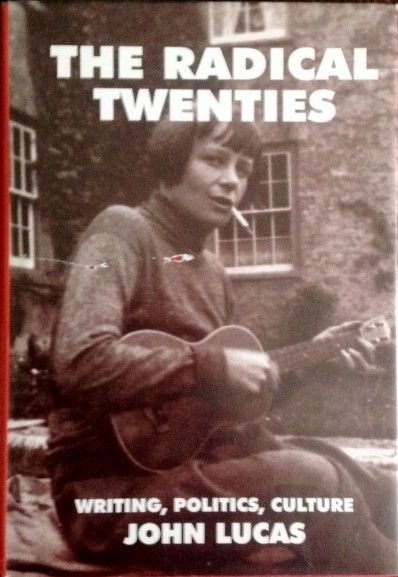Inspiring Older Readers
 posted on 07 Nov 2021
posted on 07 Nov 2021
The Radical Twenties by John Lucas
Lucas has given his 1997 study a useful sub-title when it comes to describing the contents: “Aspects of Writing, Politics and Culture”. What Lucas sets out to do is to explore the social and literary character of the 1920s by challenging what he sees as a misleading and misguiding characterisation of that decade as a time of post-war hedonism that merely presages the genuinely radical decade of the Thirties. His preface makes this hypothesis clear from the outset:
“As its title implies, The Radical Twenties is not intended to be a comprehensive account of the decade that followed The Great War. It is, however, an attempt to shift attention away from accounts which for too long have been accepted as definitive.”
Lucas uses both literary and social movements to show that far from being the decade defined by such epithets as ‘The Jazz Age’ or the time of the ‘Bright Young Things’, it is in reality a time of startling social change, political schism, literary experimentation and philosophical dispute. What is especially interesting here is that when it comes to looking at the literature of the time, Lucas doesn’t confine himself to the usual subjects but draws on sources often forgotten or ignored – writers and books that confirm his contention that a rich urge to challenge the old pre-war establishment was a core line of thinking in the Twenties.
Lucas pinpoints the continuing development of the suffragist and feminist movements alongside an emerging and more self-confident working class as key features of the decade. In fact Lucas believes that they overwhelmingly important event of the 1920s was the General Strike of 1926 – despite the fact that it was a rather ignominious and chaotic defeat for the TUC. Rather than deflating the growing working class movements with their radical agendas, Lucas maintains – convincingly I think – that the calling of the General Strike effectively forced writers, social commentators and writers to take sides and publically declare themselves.
“On the left and, I suspect, among many who would not have thought of themselves as particularly radical, the anti-climax of May, 1926, became a defining moment: a deep sense of shame worked its way into their consciousness. On the right there was a hardening of conviction as to the dangers of mass democracy.”
The reactionary politics of the likes of writers like Yeats, Eliot and Wyndham Lewis makes an interesting contrast with the emergence of working class novelists and poets whose world vision was diametrically opposed to the formers call for renewal of the pre-war social order. And yet, paradoxically, it was these same social conservatives who were the forgers of a new red-hot and radical approach to poetry and prose writing.
Ultimately, Lucas argues that seeing the Twenties as beginning in 1920 and ending in 1929 is an essentially false premise – what makes more sense is to see this as the start of an extended period of time that embraces the 1930s and in fact concludes in 1945. The mass of people had, he argues, been sold a dud bill of fare over the reasons for the Great War and it was the realisation of this that effectively created a world in which it was impossible not to take sides:
“But those sides had been preparing to do battle, metaphorically at least, as soon as the returning soldiers found that they had not been fighting for a better world but for the same old, discredited civilisation from which they had left for France. The had fought ‘the bosses war’. In this sense the 1920s did not end in 1929, nor even 1930.”
Interesting as the book is, it has its problems. One is a problem with style – which can be uneven and even clumsy on occasions - and another is with too much misplaced attention to detail at the expense of the momentum of the central narrative. But what irritated me most of all was the truly appalling number of typographical errors that sometimes make a nonsense of the sentences. It’s careless and avoidable – who proof read this??
Paperback editions of this book aren’t expensive and might be better than the much more expensive hardback – hopefully someone will have picked up the typos in the new editions.
Terry Potter
November 2021